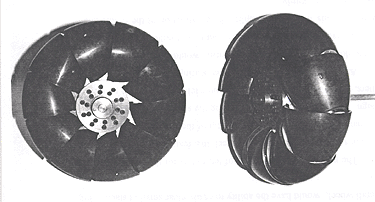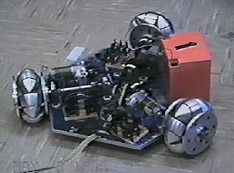

Omni-directional Robot Base


A joint project involving Rice, NASA Johnson Space Center, and the Computer Science Corporation involved developing a remote controlled robotic system to be mounted on an omni-directional platform. The problem of implementing robotic technology inpractical situations is the limited workspace of the robot arms. Mobilizing a robot significantly increases possible applications, making the robot a more productive tool. In creating a small vehicle to transport and position a robot, maneuverability and ease of control are the most critical design features.
The senior design project was limited to the design of the wheels. Each wheel was designed to roll like a traditional wheel and also translate in the direction parallel to its axis. By computer control of the rotation of the individual wheels, it is possible to independently control the translational and rotational motion of the platform.
The design, which incorporated three omni-directional wheels mounted at 120-degree intervals to a rigid base plate, provided an elegant solution to the problem. Each wheel consisted of six intertwined rollers of the same outer radius of curvature as the wheel itself, mounted at sixty degree intervals around the circumference. The results were extraordinary.